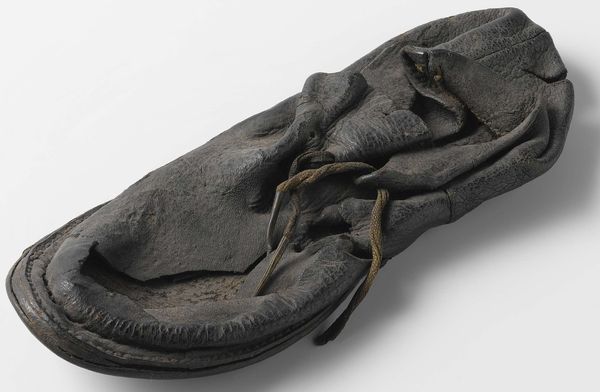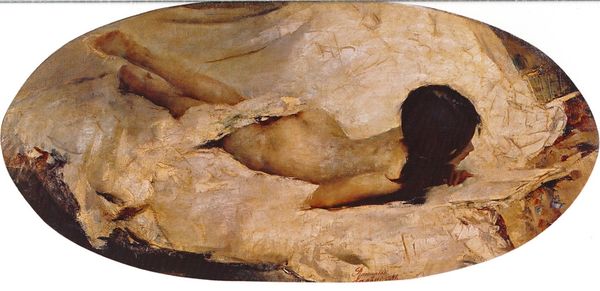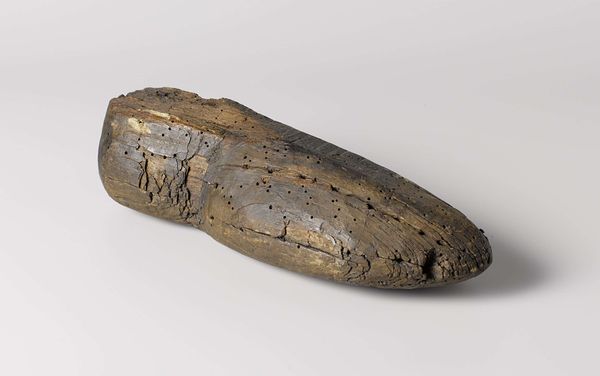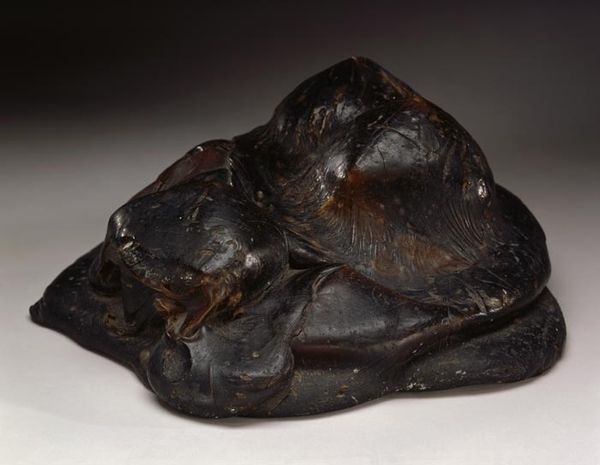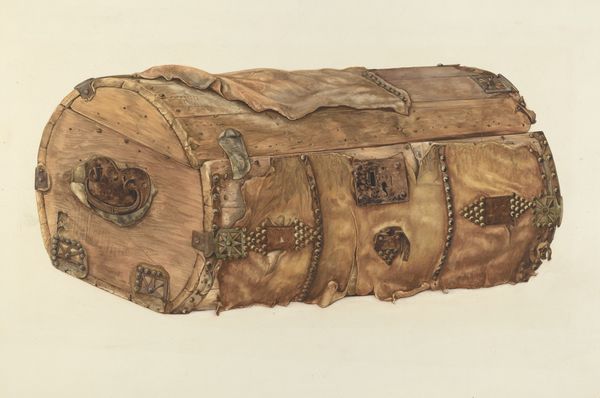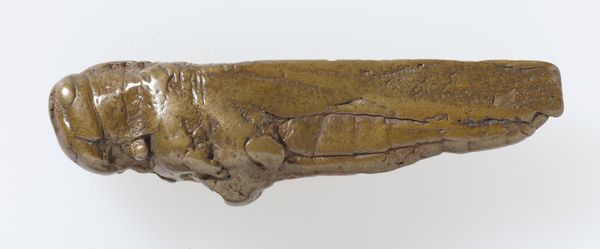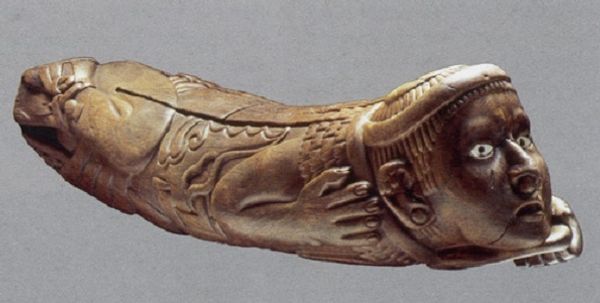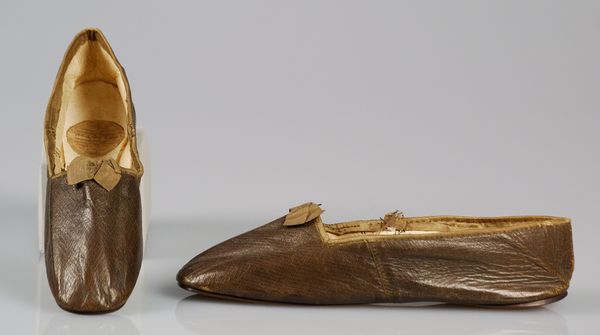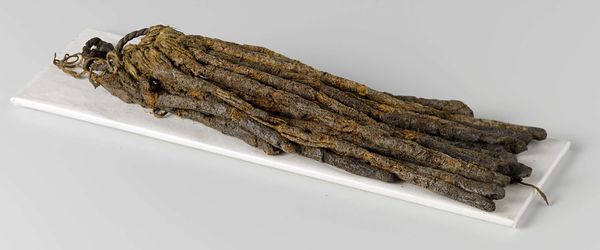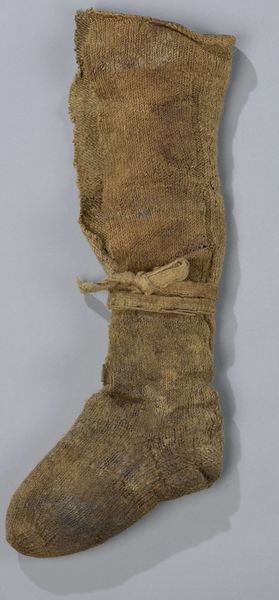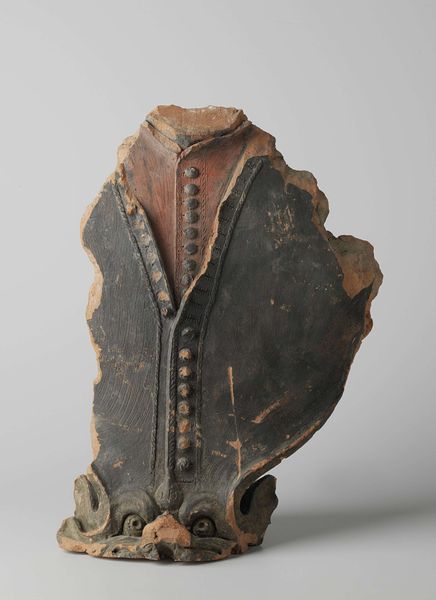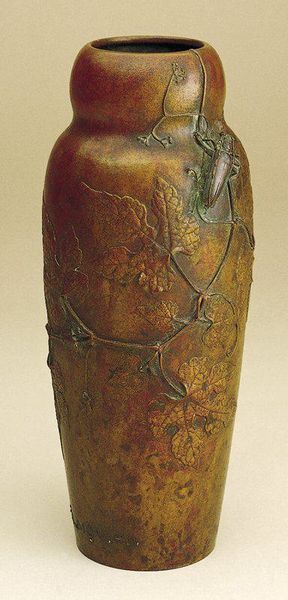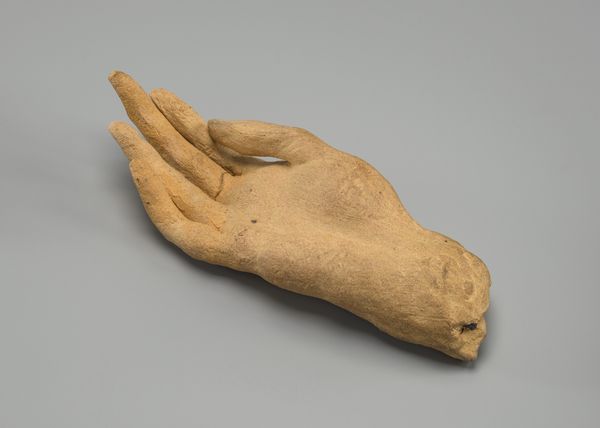
sculpture, wood
#
sculpture
#
sculpture
#
wood
#
indigenous-americas
Dimensions: Overall: 31 x 38cm (12 3/16 x 14 15/16in.) Other (heads): 28.5cm (11 1/4in.)
Copyright: Public Domain
Curator: I'm immediately struck by how ancient this looks; it’s both fragile and imposing. Editor: It does have that effect. We're looking at a "Drum" crafted sometime in the 19th century by the Hopi Tribe or a group within the Shoshonean family. It's currently held in the collection of the Metropolitan Museum of Art. Curator: A drum made with collage and textile, among the several mediums that incorporate the construction materials of the work. The colors seem muted, organic. I wonder what it sounded like, if it could still sing. Editor: The making would involve a sourcing and curing of wood, stretching animal hide, weaving, and securing the construction via meticulous labor, reflecting practical usage needs as much as ceremonial importance. Curator: Thinking about the materials used brings a somber tone to my mind: the sacrifice of those raw materials… the trees felled, the animals given. Does this shift your understanding about its use or what is represented? Editor: Well, that shift underscores a complex exchange. It is both labor, a communal creation, and the deployment of natural resources, hinting at a profound interdependence. This wasn’t just a craft it represents culture itself. Curator: I find myself wondering about its resonance in those ceremonies. Can you almost feel the rhythmic vibrations just looking at it, envision the dances, the invocations carried within its beat? Editor: I would ask if the material, shaped through communal effort, elevates utility to ritual—redefining art through participation. What you’re seeing isn’t just history on display; it's an active testament to continuity, resilience. Curator: Considering the meticulous assemblage, perhaps a testament not just to its functional purpose but as a potent symbol. I mean what are we willing to give our entire being and skill, in order to manifest our connection with spirit, a soul perhaps. Editor: To me, understanding the indigenous material base—how limited resources shape both aesthetic choices and cultural meaning, as well as challenging our ideas around labor practices helps to reclaim power. It becomes a political and ecological statement against any Western-dominated artistic legacy. Curator: And sometimes a work speaks through its presence, a raw presence, demanding not analysis, but empathy, feeling beyond thought, seeing beyond mere image. Editor: True. Its tangible rawness roots its stories within specific territories of tradition; offering both resistance and resourcefulness when you begin to connect the lineage to what its origins are.
Comments
No comments
Be the first to comment and join the conversation on the ultimate creative platform.
